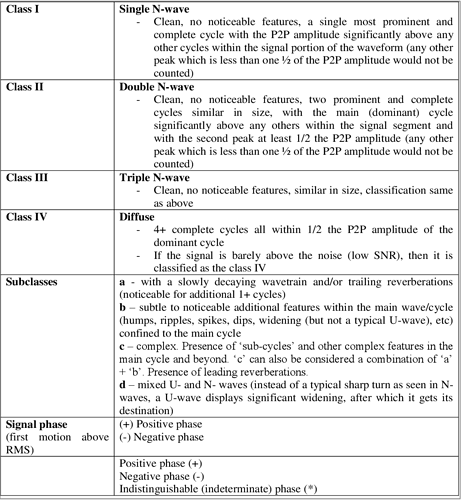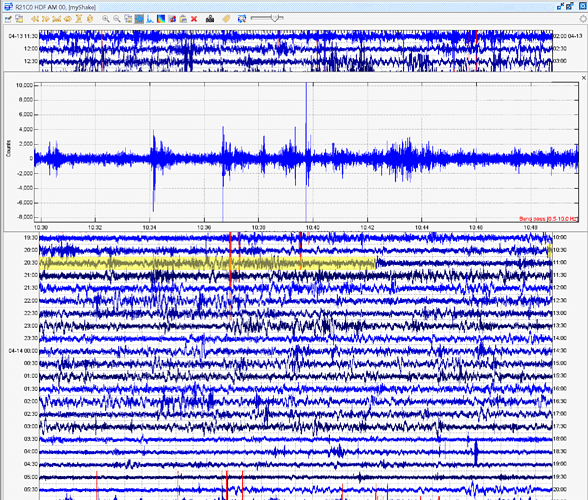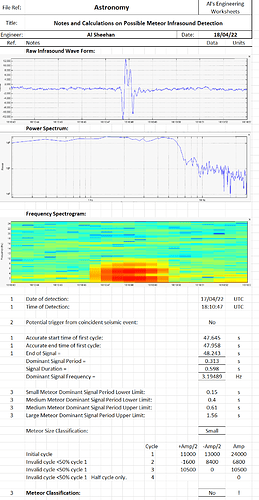The best way to identify meteor signatures is to visually or photographically observe the meteor, and then relate the timed observation to likely infrasound signatures. However, not all meteors are visible, particularly during daylight, or cloudy conditions. As an amateur astronomer, one of the things that attracted me to get a Shake and Boom was for detection of meteors.
An excellent reference for meteor infrasound signatures is the following paper: “Optical Observations of meteors generating Infrasound - I: Acoustic Signal Identification and Phenomenology”. It is available here: https://arxiv.org/ftp/arxiv/papers/1407/1407.6331.pdf
I have been applying the criteria described in this paper for potential identification of meteor signatures in my RBOOM infrasound recordings. I use an Excel spreadsheet to calculate the Dominant Signal Period (measured from the first cycle) and Dominant Signal Frequency and from that to classify the speed of the meteor. i.e. Slow is DSP<0.4s, Fast is DSP>0.61s and Medium in between (obviously).
The signature to look for and the methodology for classification of the meteors is according to this diagram:
And these are the notes relating to classification:
For now, I am ignoring any potential meteor signatures that coincide with a seismic signal. I realise that large meteors can and will excite the seismometer in the Shake and Boom, but without a confirmed sighting, I am not yet confident that a seismic signal could not produce a linked infrasound signal similar to what a meteor would produce. So for now, I am possible ignoring some larger meteors or bolides. As a result, the potential meteor signals I am finding that I have reasonable confidence in are relatively small signals - they are not the strongest signals on the helicorder (though I do still look at them just in case there’s a big one!)
The other things I look for in the signal is that the first cycle amplitude has to be the biggest. Any signal with an increasing amplitude at the from of the signal (rather than a step change) is not likely to be a meteor.
The Dominant Signal Period also needs to be in the range of 0.1s to 1.6s. Outside this range and the signal is not likely to be a meteor.
The Frequency Spectrogram will also be strong below 10Hz and relatively weak above. A 10Hz low pass filter may be useful to eliminate noise. If the expected meteor signature disappears when the filter is applied, it’s probably not a meteor.
Sporadic meteors (ones that happen all the time - not associated with meteor showers) occur at the rates of 3 to 4 up to 8 or 10 meteors per hour. That is a for visual detection. I don’t know how that rate relates to infrasound detection yet. Do some visual meteors not register on infrasound? Does infrasound detect some meteors that can’t be seen? I don’t know and haven’t yet found a reference for that.
I hope this will help people to identify meteor signals on their RBooms and encourage people to look for them.


























